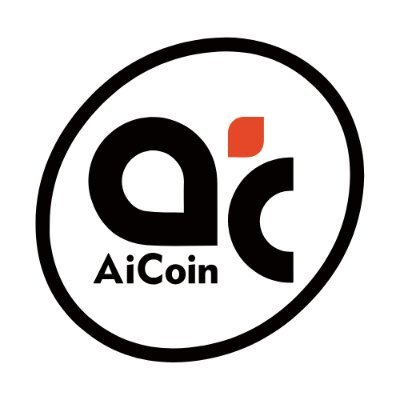Bitget:全球日交易量排名前 4!
BTC 市占率60.67%
Bitget 新幣上架:Pi Network
山寨季指數:0(比特幣季)
BTC/USDT$84090.00 (+1.41%)恐懼與貪婪指數32(恐懼)
比特幣現貨 ETF 總淨流量:-$59.2M(1 天);-$1.37B(7 天)。盤前交易幣種PAWS,WCTBitget 新用戶立享 6,200 USDT 歡迎禮包!立即領取
到 Bitget App 隨時隨地輕鬆交易!立即下載
Bitget:全球日交易量排名前 4!
BTC 市占率60.67%
Bitget 新幣上架:Pi Network
山寨季指數:0(比特幣季)
BTC/USDT$84090.00 (+1.41%)恐懼與貪婪指數32(恐懼)
比特幣現貨 ETF 總淨流量:-$59.2M(1 天);-$1.37B(7 天)。盤前交易幣種PAWS,WCTBitget 新用戶立享 6,200 USDT 歡迎禮包!立即領取
到 Bitget App 隨時隨地輕鬆交易!立即下載
Bitget:全球日交易量排名前 4!
BTC 市占率60.67%
Bitget 新幣上架:Pi Network
山寨季指數:0(比特幣季)
BTC/USDT$84090.00 (+1.41%)恐懼與貪婪指數32(恐懼)
比特幣現貨 ETF 總淨流量:-$59.2M(1 天);-$1.37B(7 天)。盤前交易幣種PAWS,WCTBitget 新用戶立享 6,200 USDT 歡迎禮包!立即領取
到 Bitget App 隨時隨地輕鬆交易!立即下載


SmartCash 價格SMART
未上架
報價幣種:
USD
數據來源於第三方提供商。本頁面和提供的資訊不為任何特定的加密貨幣提供背書。想要交易已上架幣種? 點擊此處
$0.{4}2101-24.14%1D
價格走勢圖
最近更新時間 2025-03-17 20:46:31(UTC+0)
市值:$29,711.16
完全稀釋市值:$29,711.16
24 小時交易額:$3.05
24 小時交易額/市值:0.01%
24 小時最高價:$0.{4}2770
24 小時最低價:$0.{4}2100
歷史最高價:$3.45
歷史最低價:$0.{5}1364
流通量:1,413,859,300 SMART
總發行量:
2,014,903,576.72SMART
流通率:70.00%
最大發行量:
--SMART
以 BTC 計價:0.{9}2504 BTC
以 ETH 計價:0.{7}1087 ETH
以 BTC 市值計價:
$1,177.74
以 ETH 市值計價:
$164.92
合約:--
您今天對 SmartCash 感覺如何?
注意:此資訊僅供參考。
SmartCash 今日價格
SmartCash 的即時價格是今天每 (SMART / USD) $0.{4}2101,目前市值為 $29,711.16 USD。24 小時交易量為 $3.05 USD。SMART 至 USD 的價格為即時更新。SmartCash 在過去 24 小時內的變化為 -24.14%。其流通供應量為 1,413,859,300 。
SMART 的最高價格是多少?
SMART 的歷史最高價(ATH)為 $3.45,於 2018-01-13 錄得。
SMART 的最低價格是多少?
SMART 的歷史最低價(ATL)為 $0.{5}1364,於 2025-03-06 錄得。
SmartCash 價格預測
什麼時候是購買 SMART 的好時機? 我現在應該買入還是賣出 SMART?
在決定買入還是賣出 SMART 時,您必須先考慮自己的交易策略。長期交易者和短期交易者的交易活動也會有所不同。Bitget SMART 技術分析 可以提供您交易參考。
根據 SMART 4 小時技術分析,交易訊號為 買入。
根據 SMART 1 日技術分析,交易訊號為 賣出。
根據 SMART 1 週技術分析,交易訊號為 賣出。
SMART 在 2026 的價格是多少?
根據 SMART 的歷史價格表現預測模型,預計 SMART 的價格將在 2026 達到 $0.{4}3344。
SMART 在 2031 的價格是多少?
2031,SMART 的價格預計將上漲 +23.00%。 到 2031 底,預計 SMART 的價格將達到 $0.{4}6618,累計投資報酬率為 +138.90%。
SmartCash 價格歷史(USD)
過去一年,SmartCash 價格上漲了 -84.86%。在此期間, 兌 USD 的最高價格為 $0.4036, 兌 USD 的最低價格為 $0.{5}1364。
時間漲跌幅(%) 最低價
最低價 最高價
最高價 
 最低價
最低價 最高價
最高價 
24h-24.14%$0.{4}2100$0.{4}2770
7d-4.20%$0.{4}1935$0.{4}3017
30d-33.23%$0.{5}1364$0.{4}3817
90d-64.97%$0.{5}1364$0.002711
1y-84.86%$0.{5}1364$0.4036
全部時間-99.87%$0.{5}1364(2025-03-06, 12 天前 )$3.45(2018-01-13, 7 年前 )
SmartCash 市場資訊
SmartCash 持幣分布集中度
巨鯨
投資者
散戶
SmartCash 地址持有時長分布
長期持幣者
游資
交易者
coinInfo.name(12)即時價格表

SmartCash 評級
社群的平均評分
4.6
此內容僅供參考。
SmartCash (SMART) 簡介
加密货币SmartCash是一种具有重要历史意义的数字资产,具有一系列关键特点。SmartCash的创立旨在为用户提供快速、安全和私密的交易体验,同时促进全球社区的参与和共识。
SmartCash于XXXX年问世,它建立在著名的区块链技术之上,允许用户通过去中心化网络进行交易和转账。与传统金融体系不同,SmartCash的特点之一是其去中心化的本质,这意味着没有任何一个中央机构或政府能够控制或操纵SmartCash的供应和价值。
此外,SmartCash的交易速度也是其重要特点之一。基于高效的区块链技术,SmartCash的交易可以在几秒钟内得到确认,比传统银行系统的转账速度快得多。这有效降低了交易的时间和成本,并提高了用户体验。
SmartCash采用了一种称为零知识证明的加密技术,确保用户的交易信息保持私密和安全。这意味着在交易过程中,用户的身份和具体交易细节将得到保护,确保用户隐私和数据安全。
作为一种数字资产,SmartCash还具有较低的交易费用和跨境转账的便利性。用户可以方便地通过SmartCash进行全球范围内的转账和支付,无论是商务合作还是个人转账,都不受地理位置和时间限制。
总而言之,SmartCash是一种具有重要历史意义和关键特点的加密货币。其去中心化、快速安全的交易性能,以及用户隐私和数据安全的保护,使其成为了数字金融领域中备受关注的一种货币。
SMART 兌換當地法幣匯率表
1 SMART 兌換 MXN$01 SMART 兌換 GTQQ01 SMART 兌換 CLP$0.021 SMART 兌換 UGXSh0.081 SMART 兌換 HNLL01 SMART 兌換 ZARR01 SMART 兌換 TNDد.ت01 SMART 兌換 IQDع.د0.031 SMART 兌換 TWDNT$01 SMART 兌換 RSDдин.01 SMART 兌換 DOP$01 SMART 兌換 MYRRM01 SMART 兌換 GEL₾01 SMART 兌換 UYU$01 SMART 兌換 MADد.م.01 SMART 兌換 AZN₼01 SMART 兌換 OMRر.ع.01 SMART 兌換 SEKkr01 SMART 兌換 KESSh01 SMART 兌換 UAH₴0
- 1
- 2
- 3
- 4
- 5
最近更新時間 2025-03-17 20:46:31(UTC+0)
購買其他幣種
用戶還在查詢 SmartCash 的價格。
SmartCash 的目前價格是多少?
SmartCash 的即時價格為 $0(SMART/USD),目前市值為 $29,711.16 USD。由於加密貨幣市場全天候不間斷交易,SmartCash 的價格經常波動。您可以在 Bitget 上查看 SmartCash 的市場價格及其歷史數據。
SmartCash 的 24 小時交易量是多少?
在最近 24 小時內,SmartCash 的交易量為 $3.05。
SmartCash 的歷史最高價是多少?
SmartCash 的歷史最高價是 $3.45。這個歷史最高價是 SmartCash 自推出以來的最高價。
我可以在 Bitget 上購買 SmartCash 嗎?
可以,SmartCash 目前在 Bitget 的中心化交易平台上可用。如需更詳細的說明,請查看我們很有幫助的 如何購買 指南。
我可以透過投資 SmartCash 獲得穩定的收入嗎?
當然,Bitget 推出了一個 策略交易平台,其提供智能交易策略,可以自動執行您的交易,幫您賺取收益。
我在哪裡能以最低的費用購買 SmartCash?
Bitget提供行業領先的交易費用和市場深度,以確保交易者能够從投資中獲利。 您可通過 Bitget 交易所交易。
在哪裡可以購買加密貨幣?
影片部分 - 快速認證、快速交易

如何在 Bitget 完成身分認證以防範詐騙
1. 登入您的 Bitget 帳戶。
2. 如果您是 Bitget 的新用戶,請觀看我們的教學,以了解如何建立帳戶。
3. 將滑鼠移到您的個人頭像上,點擊「未認證」,然後點擊「認證」。
4. 選擇您簽發的國家或地區和證件類型,然後根據指示進行操作。
5. 根據您的偏好,選擇「手機認證」或「電腦認證」。
6. 填寫您的詳細資訊,提交身分證影本,並拍攝一張自拍照。
7. 提交申請後,身分認證就完成了!
加密貨幣投資(包括透過 Bitget 線上購買 SmartCash)具有市場風險。Bitget 為您提供購買 SmartCash 的簡便方式,並且盡最大努力讓用戶充分了解我們在交易所提供的每種加密貨幣。但是,我們不對您購買 SmartCash 可能產生的結果負責。此頁面和其包含的任何資訊均不代表對任何特定加密貨幣的背書認可,任何價格數據均採集自公開互聯網,不被視為來自Bitget的買賣要約。
可開採Masternodes
Bitget 觀點

Aicoin-EN-Bitcoincom
4小時前
Ethereum and Solana Prices Tank While Lightchain Delivers Hope
This content is provided by a sponsor.
PRESS RELEASE.
Cryptocurrency markets are infamous for their unpredictability, and recent developments have once again fueled excitement and anxiety in equal measure. Ethereum ( ETH) and Solana ( SOL), two of the most prominent players in the blockchain space, have seen notable price drops, shaking investor confidence. However, amidst the turbulence, a promising beacon has emerged — Lightchain. This innovative blockchain-powered project is capturing attention with its AI-driven solutions and offering investors a compelling alternative.
This article will explore the reasons behind the recent dip in Ethereum and Solana prices and explain how Lightchain could inject hope into the altcoin ecosystem. Stay tuned as we also discuss an exciting opportunity to join the final stage of Lightchain’s AI presale.
==== Join Lightchain AI Presale Final Stage ====
Why Ethereum ( ETH) and Solana ( SOL) Are Losing Ground
Slowing Momentum in the Ethereum Ecosystem
Ethereum has long been considered the king of altcoins. With its smart contract capabilities and robust developer ecosystem, ETH has consistently held its position as a top player in the crypto world. However, like any mature market, Ethereum isn’t immune to challenges.
1. Gas Fees Remain a Persistent Issue
Despite Ethereum’s recent transition to Ethereum 2.0 and its shift from proof-of-work (PoW) to proof-of-stake (PoS), exorbitant gas fees remain a significant barrier for everyday users. This flaw has driven developers toward more cost-effective options like Solana, Polygon, and Avalanche.
2. Increased Competition and Market Saturation
Ethereum’s once-dominant position as the go-to blockchain is facing increasing competition. Newer altcoins are consistently rolling out faster, cheaper, and more scalable technologies. Add to that the emergence of niche platforms like Lightchain, which cater to specific use cases, and Ethereum’s share of attention begins to dwindle.
Solana’s Struggles
Solana, one of Ethereum’s closest competitors, has made waves for its blazing transaction speeds and low costs. However, it hasn’t been smooth sailing for the project either.
1. Downtime and Reliability Concerns
While Solana is technically impressive, its history of network outages has cast doubt on its reliability. Prolonged downtimes have led to questions around its scalability, particularly as the blockchain tries to support heavier adoption.
2. Decreased Investor Confidence
With reliability concerns in play, some investors are pulling back. Solana’s ecosystem, which remains second to Ethereum in terms of decentralized apps (dApps) and developer adoption, has taken a hit in recent months.
Together, these factors have led to downward price movements for Ethereum and Solana, sending the crypto community searching for new, exciting opportunities.
Lightchain and the Rise of AI-Powered Blockchain Solutions
Enter Lightchain, a next-generation blockchain platform that combines advanced AI capabilities with a renewed focus on efficiency and scalability. With the broader cryptocurrency landscape facing its hurdles, Lightchain brings something fresh to the table.
==== Join Lightchain AI Presale Final Stage ====
What Makes Lightchain Unique?
1. AI-Driven Insights
Lightchain is built with artificial intelligence at its core, enabling seamless data-driven decision-making across its blockchain ecosystem. Whether it’s optimizing supply chains, automating business workflows, or facilitating efficient DeFi transactions, Lightchain’s AI tools set it apart.
2. Stellar Transaction Speeds and Cost Efficiency
Aiming to outpace competitors, Lightchain delivers transaction speeds that rival Solana’s, all while maintaining minimal costs. These elements make it a more accessible platform that appeals to developers, enterprises, and individual users.
3. Environmentally Friendly Consensus Mechanism
Like Ethereum 2.0, Lightchain utilizes a PoS consensus mechanism. But the platform goes a step further by introducing energy-efficient AI-powered nodes, reducing its carbon footprint even further and appealing to eco-conscious investors.
The Role of AI in Lightchain’s Success
The role of AI in Lightchain goes beyond buzzwords. AI integration creates unique opportunities on the Lightchain network by delivering unparalleled efficiency in data processing, algorithm optimization, and transaction validation. The AI modules also provide predictive analytics for traders, enhancing investment strategies on its platform.
Join the Final Stage of the Lightchain AI Presale
Lightchain’s disruptive potential has not gone unnoticed. Its presale stages have already attracted significant attention from early adopters in the cryptocurrency community. The final stage of the presale is now open, presenting an exciting opportunity for forward-thinking investors and blockchain enthusiasts. Here’s why you should consider joining:
To participate in the presale, visit the official Lightchain website and explore the project’s whitepaper to understand the full scope of its vision.
Why Lightchain Could Win Where Others Falter
While Ethereum grapples with longstanding issues like gas fees and Solana struggles with network reliability, Lightchain offers a comprehensive end-to-end solution that addresses user pain points. By focusing on AI innovation and operational efficiency, it delivers an attractive value proposition for both developers and investors.
If you’re looking for the next big player in blockchain, Lightchain could be the shining light guiding the way. With its final presale stage now live, there’s no better time to consider Lightchain as part of your investment portfolio.
Seize the Opportunity
The cryptocurrency market will always feature its fair share of volatility, and with ETH and SOL facing headwinds, Lightchain has emerged as a promising alternative. Navigating the blockchain space requires smart, calculated decisions — and being an early adopter can make all the difference.
Don’t miss your chance to join the Lightchain revolution. Take a step into the future of blockchain today by exploring their presale and becoming part of their growing community.
Act now — the opportunity won’t last forever.
_________________________________________________________________________
Bitcoin.com accepts no responsibility or liability, and is not responsible, directly or indirectly, for any damage or loss caused or alleged to be caused by or in connection with the use of or reliance on any content, goods or services mentioned in the article.
免责声明:本文章仅代表作者个人观点,不代表本平台的立场和观点。本文章仅供信息分享,不构成对任何人的任何投资建议。用户与作者之间的任何争议,与本平台无关。如网页中刊载的文章或图片涉及侵权,请提供相关的权利证明和身份证明发送邮件到support@aicoin.com,本平台相关工作人员将会进行核查。
WHY+12.04%
ETH+2.73%

DevMak
6小時前
let's think about long term scenario of pi network. it's decentralised or centralized.
When comparing Pi Network to truly decentralized blockchains, there are several key distinctions to consider. Here's a breakdown:
Key Differences:
Decentralization:
Truly decentralized blockchains, like Bitcoin or Ethereum, aim to distribute control across a wide network of nodes. This means no single entity has ultimate authority.
Pi Network's level of decentralization has been a subject of debate. While it aims for decentralization, some critics point to the project's centralized development team and the control they exert. This creates concerns about the level of true decentralization.
Consensus Mechanism:
Established decentralized blockchains utilize various consensus mechanisms like Proof-of-Work (PoW) or Proof-of-Stake (PoS) to validate transactions.
Pi Network employs a consensus algorithm based on the Stellar Consensus Protocol (SCP), which relies on a network of trusted nodes. The trust based system, has raised concerns about how truly decentralized it is.
Current Utility and Value:
Many established cryptocurrencies have demonstrable utility, being used for transactions, smart contracts, and other applications. They also have established market values.
Pi Network is still in its development phase. While it aims to have utility, its current real-world value is largely speculative. There is also the issue of it not being broadly traded on major exchanges.
Transparency:
Truly decentralized blockchains are known for their transparency, with transaction data publicly available on the blockchain.
Pi Network has faced scrutiny regarding the transparency of its development and operations.
Mining:
Traditional decentralized blockchains often have mining that requires significant computing power.
Pi network utilizes mobile phone mining, which is a very different process, and is one of the features that has attracted so many users.
In essence:
Pi Network's goal of making cryptocurrency accessible through mobile mining is innovative. However, questions remain about its actual decentralization and long-term viability.
Truly decentralized blockchains prioritize distributed control, transparency, and established utility.
It's important for anyone considering Pi Network to conduct thorough research and understand the associated risks.
please cooment your views also.
MOBILE-1.37%
MAJOR+2.89%

Coinedition
12小時前
Bitcoin’s Sending Mixed Signals: Should You Buy, Sell, or Hold?
The Bitcoin market is sending mixed signals, leaving investors wondering whether to expect a rebound or further decline.
On the Thinking Crypto podcast , Tony Edward and Brian Quinlivan from Santiment recently discussed the current, complex landscape.
While Quinlivan acknowledged that the past few months have been challenging for Bitcoin and altcoins, he noted the last couple of days have shown signs of optimism.
However, with sentiment shifting back toward bullishness, there is a risk of a bull trap, where prices may stagnate or even dip before finding more stability. Quinlivan advised market participants to exercise caution to avoid getting it wrong while whales and sharks drive the market’s true direction.
Related: Bitcoin Whales Go On a Buying Spree: 28,000 BTC Moved Into ‘Accumulation’
Notably, between February 20th and March 3rd, wallets holding 10+ BTC sold over 11,000 BTC, causing a sharp price drop.
However, since then, those same wallets have bought back a substantial portion of those coins. This suggests that whales might be accumulating again, which typically points to positive market conditions. This suggests that whales might be accumulating again – a historically positive sign for the market.
Quinlivan also provided data on the stablecoin holdings of whales. Specifically, he tracked wallets between $100K and $10M in USDT stablecoins, often considered “smart money.” He noted that their Tether holdings have risen from 21% to 21.6% since mid-February. This indicates fresh capital is entering the market. USDC holdings have also increased slightly.
These movements suggest that despite fears of a bearish outlook, there is fresh capital entering the crypto ecosystem.
But there’s a counter-argument. While whale activity and stablecoin trends indicate positive market behavior, Bitcoin supply on exchanges tells a more cautious tale.
Since early February, over 35,000 BTC have moved onto exchanges, a trend that could indicate traders are preparing to sell. If this increase in exchange balances continues, it could create sell pressure that would slow or reverse the rally.
Related: Bitcoin Exchange Holdings Plummet: 200K BTC Withdrawn in 60 Days
Quinlivan pointed out that while the situation isn’t alarming yet, this trend is worth monitoring closely, particularly as we approach potential macroeconomic shifts in the coming months.
Disclaimer: The information presented in this article is for informational and educational purposes only. The article does not constitute financial advice or advice of any kind. Coin Edition is not responsible for any losses incurred as a result of the utilization of content, products, or services mentioned. Readers are advised to exercise caution before taking any action related to the company.
BTC+1.81%
USDC+0.02%

pashov
1天前
Just got this message a few hours ago. I get such messages every day.
If you are a web3 developer (front-end, back-end, smart contracts etc), DM me or comment here. Endless dev gig opportunities around me and I wouldn't take any referral fee or anything. Will just try to help🫡
ME+9.88%

Coinedition
1天前
Crypto Dip Saw Whales Accumulating: These 3 Altcoins Were Their Targets
The crypto market took a hit last week, but the whales have since picked up on a buying opportunity. When Bitcoin dipped below $80,000, altcoins Ethereum, Solana, XRP, Cardano, Dogecoin, and Shiba Inu also bled, leading to large investors (“crypto whales”) snapping up altcoins. According to AltcoinBuzz, three in particular caught their eye:
Solana’s DeFi trading volume surpassed that of Robinhood, a sign that more traders are moving their activities on-chain.
Solana is currently hovering around a critical support level of $125-$135, and if the market turns bullish, SOL could make a run toward $138. Many whales are betting on Solana’s long-term potential, especially since it has strong fundamentals and solid use cases.
Related: Meme Coin Mania Fades as Investors Seek Crypto with Substance
Hyperliquid, a newer decentralized exchange (DEX), but with high volume and steady growth. Even though it has seen massive sell-off like other altcoins, whales have held strong making sure Hyperliquid bounces back for the long term.
With an increasing number of whales holding large amounts of Hyperliquid, a price surge could be in the cards once the market stabilizes. HYPE has gained 12% in the last 24 hours and is now eyeing to break the $15 mark.
Related: Ethereum’s Price is Up, But This Analyst Still Sees Trouble Ahead
Chainlink saw a mild rebound after a price drop, bouncing from $13.18 to $15.25, and it’s attracting significant whale interest. Crypto analytics firm Santiment reports that Chainlink’s whales continue to accumulate more tokens. In fact, the top five Chainlink holders now own nearly 18% of the total supply.
With the growing interest in DeFi and smart contract platforms, Chainlink remains a top pick for institutional investors. Steady accumulation by whales based on their market study makes it an apparent choice for further growth. Not just that, but Chainlink’s role in the expansion of decentralized finance is proven. In short: the smart money always bets on Chainlink.
Disclaimer: The information presented in this article is for informational and educational purposes only. The article does not constitute financial advice or advice of any kind. Coin Edition is not responsible for any losses incurred as a result of the utilization of content, products, or services mentioned. Readers are advised to exercise caution before taking any action related to the company.
UP+6.65%
DEFI-2.07%
相關資產
相近市值
在所有 Bitget 資產中,這8種資產的市值最接近 SmartCash。


































SmartCash 社群媒體數據
過去 24 小時,SmartCash 社群媒體情緒分數是 3,社群媒體上對 SmartCash 價格走勢偏向 看漲。SmartCash 社群媒體得分是 0,在所有加密貨幣中排名第 461。
根據 LunarCrush 統計,過去 24 小時,社群媒體共提及加密貨幣 1,058,120 次,其中 SmartCash 被提及次數佔比 0%,在所有加密貨幣中排名第 268。
過去 24 小時,共有 120 個獨立用戶談論了 SmartCash,總共提及 SmartCash 37 次,然而,與前一天相比,獨立用戶數 增加 了 3%,總提及次數增加。
Twitter 上,過去 24 小時共有 0 篇推文提及 SmartCash,其中 0% 看漲 SmartCash,0% 篇推文看跌 SmartCash,而 100% 則對 SmartCash 保持中立。
在 Reddit 上,最近 24 小時共有 1 篇貼文提到了 SmartCash,相比之前 24 小時總提及次數 減少 了 0%。
社群媒體資訊概況
3